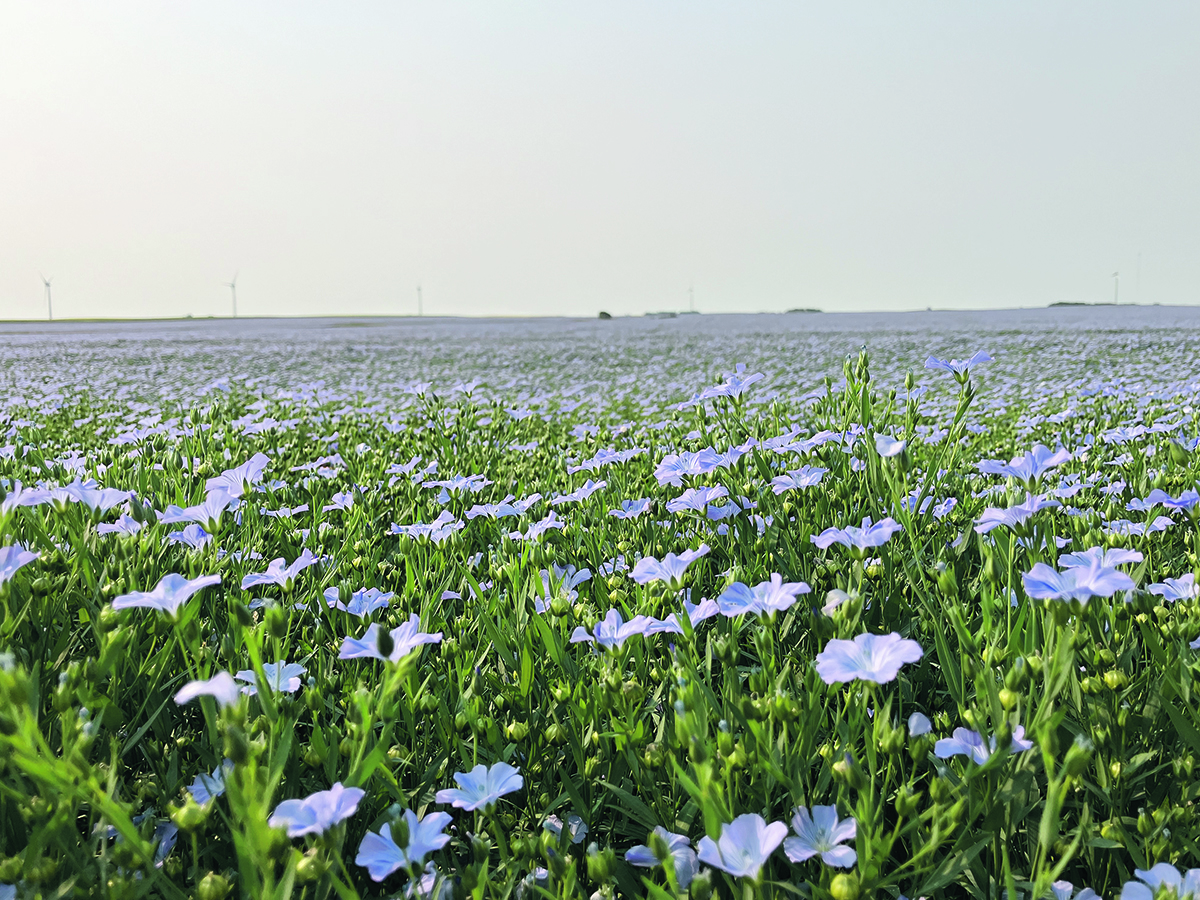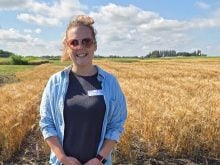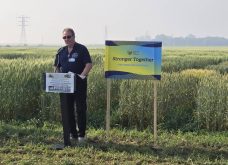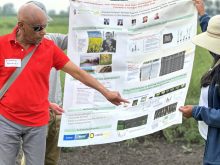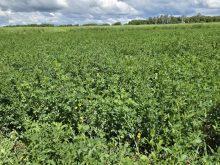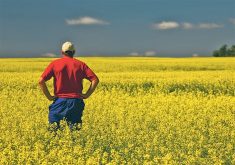SaskCanola and SaskFlax make their final presentations as SaskOilseeds gets to work representing producers’ interests
REGINA — SaskOilseeds took the stage as the newest provincial crop commission earlier this month, with the final presentations from SaskCanola and SaskFlax and the reveal of a new logo.
The merger of the two was official Aug. 1, and after wrapping up some final financial transactions, the new entity has settled in to handle both crops.
Outgoing SaskCanola chair Keith Fournier said the amalgamation went well.
Read Also

Manitoba extends Crown land rent freeze
Manitoba government links the continued rental rate freeze on grazing and forage leases to economic and environmental challenges facing the industry
Agreements are easy to come by when both parties have a shared vision and there’s a positive outcome for both, he told the annual general meeting.
“We want to be sure that we stay true to the goals of the commissions of our founders and the legislation also that we’re governed by,” he said.
Producers sometimes become tied to the organizations they represent, but Fournier noted the reality is most farmers are growing several crops.
He said meetings are already underway through SaskCrops, which organized the annual meetings in Saskatoon, to find more ways to collaborate.
“We should be looking for levy payer efficiencies through all of our commissions, and that would be through wheat, pulse, barley and I would throw in even the minor ones, canaryseed, oats, mustard,” he said.
The commissions held a meeting in December to explore synergies, and Fournier said there was support to form a committee to see what works under a SaskCrops umbrella and what each commission would prefer to keep in its own house.
Edenwold, Sask., farmer Alanna Koch said the SaskOilseeds initiative and word of more co-operation was exciting because it could save money and have more impact.
“This speaks to the strength of the industry,” she said.
The 2024-25 budget presented to growers was based on revenue and levy refunds for the 2023-24 crop year, said finance chair Anthony Eliason. He projected total revenue of $7,993,080 and expenses of $8,925,417. The deficit is due to capital expenditures for the University of Saskatchewan soil science building and AgriARM funding.
Research is the main investment priority, along with extension programs such as disease testing and on-farm research trials.
Eliason said the levy for flax will continue at the same rate as it did previously. This is $2.36 per tonne of seed and 50 cents per tonne of straw collected by buyers at the time of sale. The current refund rate is 2.25 per cent, and the number of producers asking for refunds was down significantly, he said.
The canola levy is 75 cents per tonne, with a refund rate of 7.6 percent and trending lower. Eliason said fewer than 550 producers asked for refunds.
“The majority of refund requests typically come from the same producers each and every year. This underlines why investing in communications to growers to share the value of the levy investment retained remains a critical component of our work,” he said.
Executive director Tracy Broughton said the new SaskOilseeds logo represents a book to signify the research the organization invests in and the knowledge gained.
“It appears as a seedling coming out of the earth and then the top part is an oil drop. If you look at the whole thing, you would probably see a flower, and then it’s captured within the province of Saskatchewan,” she said.
Previous logos included the flowers of both crops.
The colours used in the new logo are meant to be used alongside either crop.
Outgoing SaskFlax chair Greg Sundquist said there is a bright future for flax under the new arrangement.
SaskCanola was established in 1991 and SaskFlax in 1996. The merged organization represents 17,000 canola growers who pay levies and 3,000 flax growers.
After the annual meeting, directors elected Dean Roberts from Coleville as the first chair. Codie Nagy from Ogema is vice-chair.
Meanwhile, Fournier said 2025 will be a correction year as farmers sharpen their pencils when looking at rotations and inputs.
He likened 2024 to an amusement park ride.
After a dry spring, the rain came.
“You’re sort of going up that hill on that roller coaster, and the rains kept coming, and so we got up to the top there in mid-July and things looked pretty good. We were all sitting there enjoying that view,” he said.
However, the intense heat of late July and August was the downward momentum of the roller coaster. He said farmers didn’t realize the heat’s toll until they harvested.
And the ride wasn’t over. Then came a price drop — a loop-de-loop — followed by a railroad strike — another loop— and then a port strike and tariff talk.
“The stomach gets a little queasy,” he said.
“But the one thing I do know of Saskatchewan farmers is that they will be standing in line here this spring to buy another ticket for that ride again.”


